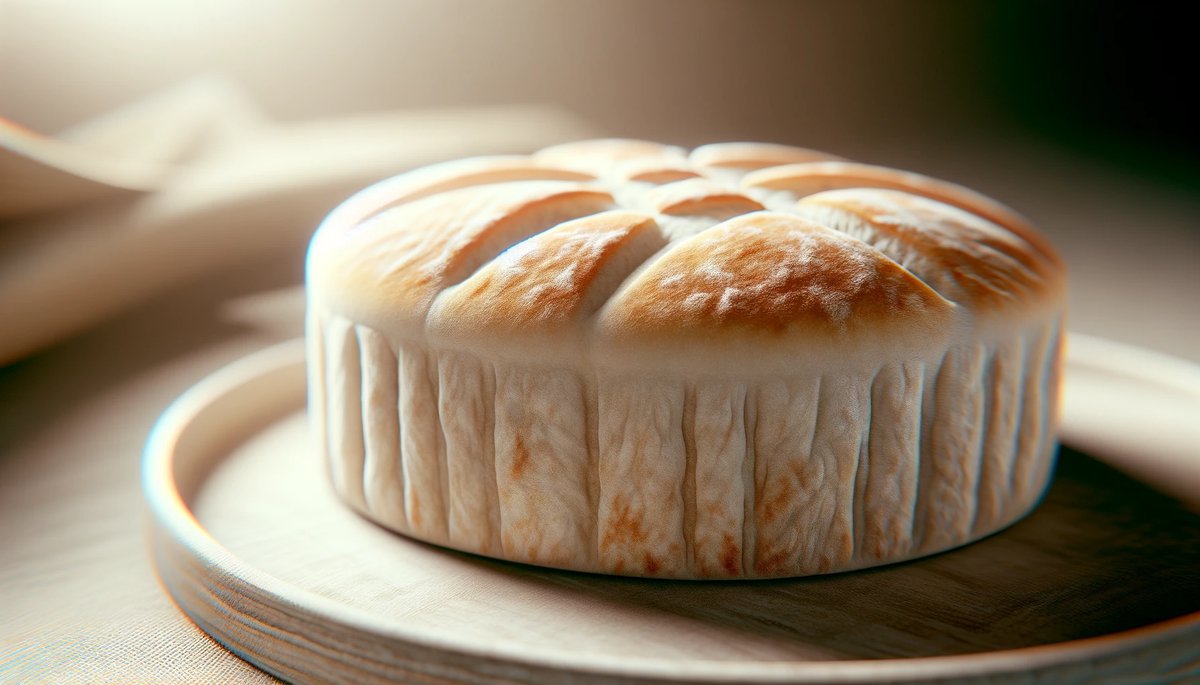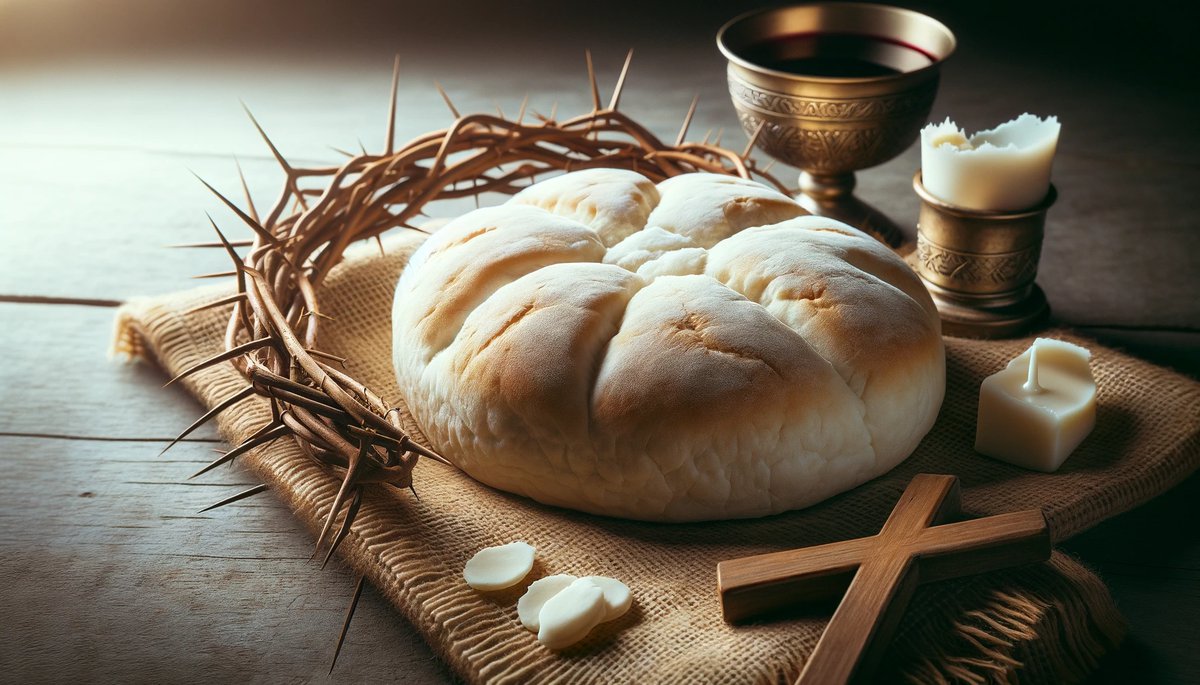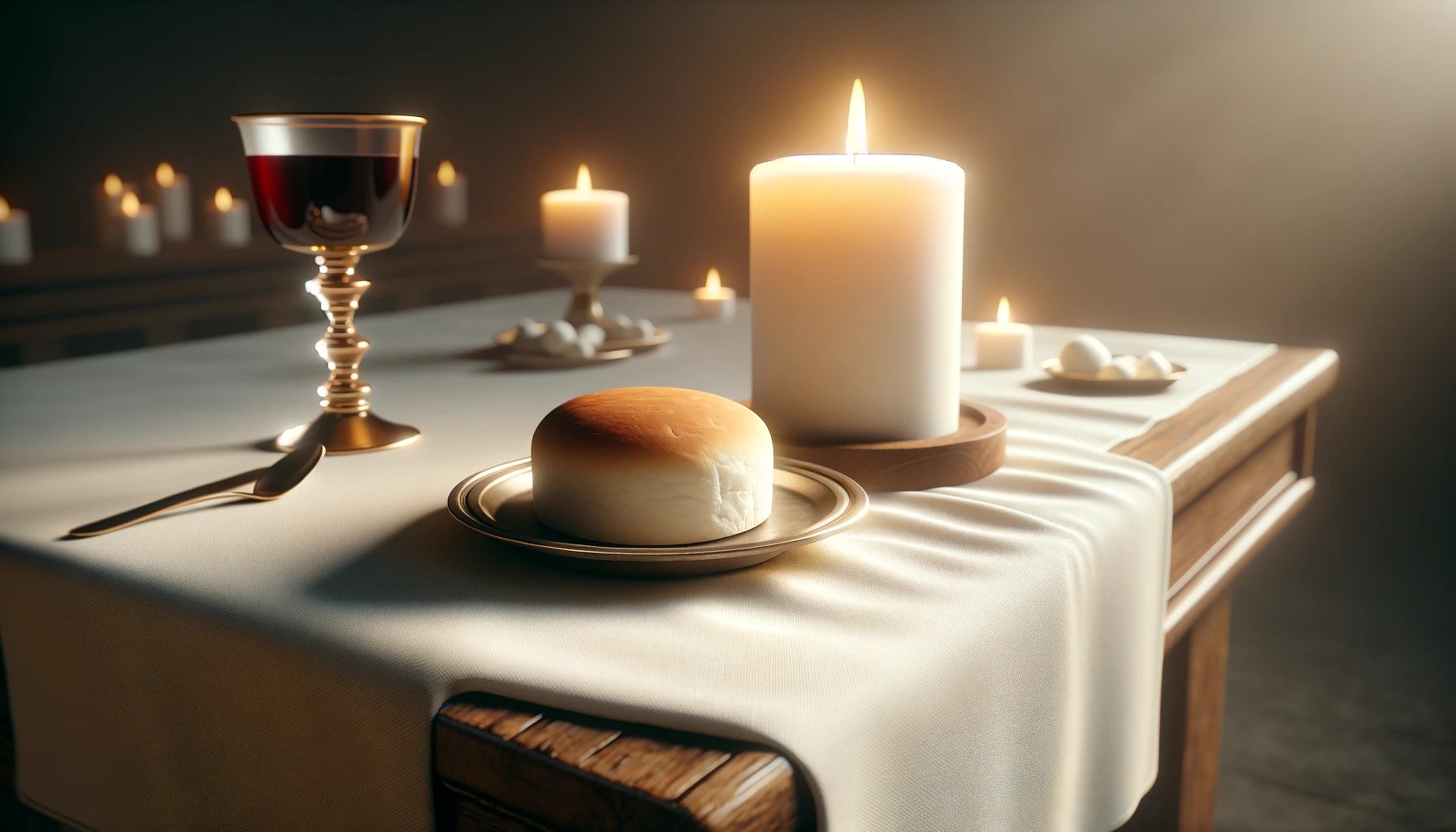Home>Theology and Spirituality>How To Bake Holy Communion Bread


Theology and Spirituality
How To Bake Holy Communion Bread
Published: February 24, 2024
Ericka Andersen, an editor at Christian.net, expertly merges digital strategy with content creation, focusing on faith and societal issues. Her communication skills enhance the platform's engaging narratives, fostering meaningful dialogue on belief's impact on society.
Learn how to bake holy communion bread with our comprehensive guide. Explore the intersection of theology and spirituality through this sacred tradition. Ideal for those seeking a deeper connection to their faith.
(Many of the links in this article redirect to a specific reviewed product. Your purchase of these products through affiliate links helps to generate commission for Christian.net, at no extra cost. Learn more)
Introduction
Baking holy communion bread is a sacred tradition that dates back centuries, with roots deeply embedded in religious and spiritual practices. The act of preparing the bread for the Eucharist holds profound significance, symbolizing the body of Christ and the unity of believers. As such, the process of baking holy communion bread is not merely a culinary endeavor; it is a spiritual and reverent practice that requires care, attention, and intentionality.
The aroma of freshly baked communion bread wafting through the air evokes a sense of reverence and anticipation, signaling the sacred moment that is to come during the Eucharistic celebration. Each step of the baking process is imbued with meaning, from the careful selection of ingredients to the act of kneading the dough with purpose and devotion.
In this guide, we will explore the art of baking holy communion bread, delving into the ingredients, equipment, and precise instructions necessary to create this sacred element of the Eucharist. Whether you are a member of the clergy, a dedicated church volunteer, or an individual seeking to deepen your spiritual connection through the act of baking, this guide will provide you with the knowledge and inspiration to embark on this meaningful culinary and spiritual journey.
As we embark on this exploration of baking holy communion bread, let us approach the process with reverence and mindfulness, recognizing the profound symbolism and spiritual significance that it holds. Through the careful preparation of this sacred bread, we honor the traditions of the past and create a meaningful experience for the present, uniting our hearts and spirits in a shared expression of faith and devotion.
Read more: How To Make Bread For Communion
Ingredients
To embark on the sacred journey of baking holy communion bread, it is essential to gather the fundamental ingredients that will form the basis of this revered element of the Eucharist. Each component plays a crucial role in shaping the texture, flavor, and symbolism of the communion bread, infusing it with profound significance and spiritual resonance. Here are the essential ingredients required for crafting holy communion bread:
1. Flour
The foundation of holy communion bread lies in the selection of high-quality flour. Opt for unbleached white flour, which possesses a fine texture and neutral flavor, allowing the symbolic essence of the bread to take center stage. The flour serves as the primary building block of the dough, providing structure and substance to the communion bread.
2. Water
Pure, clean water is a vital component of communion bread, representing the essence of life and purity. When combined with the flour, water facilitates the formation of the dough, binding the ingredients together and imbuing the bread with a sense of unity and cohesion.
3. Salt
Incorporating a modest amount of salt into the communion bread not only enhances its flavor but also carries symbolic significance. Salt has long been associated with purification and preservation, symbolizing the enduring nature of faith and the sanctity of the Eucharistic tradition.
Read more: How To Wish Holy Communion
4. Olive Oil
Olive oil, revered for its rich symbolism in religious and spiritual contexts, serves as a poignant addition to holy communion bread. It infuses the bread with a subtle yet distinctive flavor, while also symbolizing anointing and consecration, further deepening the spiritual resonance of the Eucharistic ritual.
5. Honey
The inclusion of honey in communion bread adds a touch of natural sweetness, symbolizing the richness of God's grace and the sweetness of spiritual nourishment. This natural sweetener contributes depth to the flavor profile of the bread, creating a sensory experience that resonates with the sacred act of communion.
6. Yeast
Yeast, a living organism that facilitates the leavening process, holds profound symbolism in the context of holy communion bread. It represents growth, transformation, and the permeation of spiritual truth, infusing the bread with a sense of vitality and renewal.
7. Unleavened Bread Stamp
While not an ingredient in the traditional sense, the unleavened bread stamp holds immense significance in the preparation of holy communion bread. This specialized tool, often adorned with religious symbols, imparts intricate patterns onto the bread, symbolizing the unity and diversity of believers within the body of Christ.
By thoughtfully selecting and combining these essential ingredients, one embarks on a profound journey of culinary and spiritual significance, laying the foundation for the creation of holy communion bread that embodies the sacred traditions and timeless symbolism of the Eucharist.
Read more: How To Take The Holy Communion
Equipment
Embarking on the sacred endeavor of baking holy communion bread necessitates the utilization of specific equipment that honors the reverence and significance of this spiritual practice. Each piece of equipment serves a distinct purpose, contributing to the meticulous preparation and symbolic resonance of the communion bread. Here is a comprehensive overview of the essential equipment required for the sacred art of baking holy communion bread:
-
Mixing Bowl: A sturdy mixing bowl, preferably made of stainless steel or ceramic, serves as the vessel for combining the foundational ingredients of the communion bread. The spacious interior of the mixing bowl allows for thorough blending of the flour, water, salt, olive oil, honey, and yeast, fostering the creation of a cohesive and spiritually meaningful dough.
-
Wooden Spoon: A wooden spoon embodies a sense of tradition and craftsmanship, making it an ideal tool for gently stirring and kneading the communion bread dough. Its smooth surface and ergonomic design facilitate the incorporation of ingredients while preserving the tactile connection between the baker and the sacred process.
-
Baking Sheet: A durable baking sheet, lined with parchment paper, provides the canvas upon which the communion bread will be formed and baked. The flat, even surface of the baking sheet ensures uniformity in the shape and texture of the bread, while the parchment paper prevents sticking and facilitates seamless removal post-baking.
-
Unleavened Bread Stamp: This specialized tool, often crafted from wood or metal, bears intricate religious symbols that impart meaningful patterns onto the communion bread. The unleavened bread stamp serves as a poignant symbol of unity and diversity within the body of Christ, imprinting the bread with visual representations of spiritual interconnectedness.
-
Oven: A reliable oven, capable of maintaining a consistent temperature, is essential for baking the communion bread to perfection. Whether a conventional or convection oven, its gentle heat transforms the prepared dough into the sacred element that will be shared during the Eucharistic celebration.
-
Prayerful Intentions: While not a tangible piece of equipment, the inclusion of prayerful intentions is an indispensable aspect of the communion bread preparation process. Infusing each step with mindfulness and spiritual devotion, the baker imbues the bread with heartfelt significance, elevating it from a mere culinary creation to a sacred symbol of faith and unity.
By assembling and utilizing these essential pieces of equipment, one embraces the solemn responsibility of crafting holy communion bread with reverence, intentionality, and a deep appreciation for the spiritual significance it embodies. Each item contributes to the seamless fusion of culinary artistry and sacred tradition, culminating in the creation of communion bread that resonates with profound spiritual meaning and symbolic depth.
Instructions
-
Prepare the Dough: In a large mixing bowl, combine 3 cups of unbleached white flour with 1 teaspoon of salt. Create a well in the center of the flour mixture and add 1 tablespoon of olive oil, 1 tablespoon of honey, and 1 cup of warm water. Sprinkle 1 packet of active dry yeast over the surface. Using a wooden spoon, gently incorporate the ingredients until a shaggy dough forms.
-
Knead the Dough: Transfer the dough onto a lightly floured surface. Knead the dough for 8-10 minutes, or until it becomes smooth and elastic. As you knead, infuse the process with prayerful intentions, reflecting on the sacred significance of the communion bread.
-
Rest and Rise: Place the kneaded dough in a clean, lightly oiled bowl, turning the dough to coat it with oil. Cover the bowl with a damp cloth and allow the dough to rise in a warm, draft-free environment for approximately 1 hour, or until it doubles in size. This period of rest and rise symbolizes the transformative nature of faith and spiritual growth.
-
Preheat the Oven: While the dough is rising, preheat the oven to 375°F (190°C), ensuring that it reaches the optimal temperature for baking the communion bread.
-
Shape the Bread: Once the dough has doubled in size, gently punch it down to release the air. Transfer the dough to a parchment-lined baking sheet. With reverence, divide the dough into equal portions and shape them into round, flat discs, approximately 1/4 inch thick.
-
Imprint with Symbolism: Using the unleavened bread stamp, carefully imprint meaningful religious symbols onto the surface of the communion bread. Each impression serves as a visual representation of spiritual interconnectedness and the unity of believers within the body of Christ.
-
Bake with Reverence: Place the prepared communion bread in the preheated oven and bake for 15-18 minutes, or until the bread achieves a light, golden-brown hue. As the bread bakes, embrace the solemnity of the moment, recognizing the profound transformation taking place within the confines of the oven.
-
Cool and Reflect: Once baked, remove the communion bread from the oven and allow it to cool on a wire rack. As the bread cools, take a moment to reflect on the spiritual significance of the Eucharist and the role of the communion bread in fostering unity and faith within the community.
-
Prepare for the Eucharist: With the communion bread now lovingly prepared, it is ready to be used in the sacred ritual of the Eucharist, symbolizing the body of Christ and the spiritual nourishment shared among believers.
By following these precise instructions with reverence and intentionality, one engages in the sacred act of baking holy communion bread, infusing each step with profound spiritual significance and honoring the timeless traditions of the Eucharist.
Tips for Success
Baking holy communion bread is a sacred and meaningful endeavor, requiring attention to detail and a deep reverence for the spiritual significance it embodies. To ensure the successful creation of communion bread that resonates with profound symbolism and culinary excellence, consider the following tips:
-
Mindful Preparation: Approach the process of baking holy communion bread with a spirit of mindfulness and intentionality. Infuse each step with prayerful thoughts, reflecting on the sacred nature of the bread and its role in the Eucharistic celebration.
-
Symbolic Imprinting: When using the unleavened bread stamp to imprint religious symbols onto the communion bread, do so with care and reverence. Each impression serves as a visual representation of spiritual interconnectedness and the unity of believers within the body of Christ.
-
Consistent Thickness: Aim for uniformity in shaping the communion bread, ensuring that each portion is of consistent thickness. This practice results in even baking and a cohesive presentation of the sacred bread.
-
Temperature Precision: Maintain a consistent oven temperature throughout the baking process. Fluctuations in temperature can impact the texture and appearance of the communion bread, so vigilance in this regard is crucial.
-
Embrace Imperfections: While precision is important, remember that the act of baking holy communion bread is a deeply human endeavor. Embrace the imperfections and unique characteristics of each bread, recognizing that they symbolize the diversity and individuality of believers within the community.
-
Share the Experience: Consider involving members of the community in the baking process, fostering a sense of shared participation and spiritual connection. This collaborative approach can deepen the communal significance of the communion bread.
-
Prayerful Reflection: As the communion bread bakes and cools, take moments for prayerful reflection on the spiritual significance of the Eucharist and the role of the bread in fostering unity and faith within the community.
-
Storage and Handling: Once the communion bread is prepared, store it in airtight containers to maintain its freshness and symbolic integrity. Handle the bread with care and respect, recognizing its sacred purpose.
By embracing these tips with sincerity and devotion, one can elevate the act of baking holy communion bread into a profound expression of faith, unity, and reverence. Each tip serves as a guiding principle, ensuring that the communion bread embodies the spiritual depth and symbolic resonance inherent in the Eucharistic tradition.
Conclusion
In the sacred tradition of baking holy communion bread, each step is imbued with profound symbolism, spiritual resonance, and a deep sense of reverence. As the journey of crafting communion bread unfolds, it becomes evident that this act transcends the realm of culinary artistry, evolving into a poignant expression of faith, unity, and devotion. The culmination of this sacred endeavor yields communion bread that serves as a tangible embodiment of the Eucharistic tradition, symbolizing the body of Christ and the spiritual nourishment shared among believers.
Through the careful selection and combination of essential ingredients, the communion bread becomes a testament to the enduring traditions of the Eucharist. The flour, water, salt, olive oil, honey, and yeast harmonize to form a cohesive and spiritually meaningful dough, representing the unity and diversity of believers within the body of Christ. Each ingredient carries profound symbolism, infusing the communion bread with layers of significance that resonate deeply within the hearts and spirits of those who partake in the Eucharistic celebration.
The utilization of specific equipment further underscores the solemn responsibility of crafting holy communion bread with reverence and intentionality. From the mixing bowl and wooden spoon to the baking sheet and unleavened bread stamp, each piece of equipment contributes to the seamless fusion of culinary artistry and sacred tradition. The act of imprinting religious symbols onto the bread serves as a visual representation of spiritual interconnectedness, fostering a sense of unity and faith within the community.
As the precise instructions are followed with mindfulness and prayerful intentions, the act of baking holy communion bread becomes a transformative and deeply spiritual experience. The kneading of the dough, the period of rest and rise, and the careful shaping and imprinting of the bread all reflect the profound symbolism and spiritual significance inherent in the Eucharistic tradition. The baking process itself becomes a moment of solemn reflection, as the communion bread undergoes a metamorphosis within the confines of the oven, emerging as a sacred symbol of faith and unity.
In conclusion, the act of baking holy communion bread transcends the boundaries of culinary craftsmanship, evolving into a sacred and deeply meaningful expression of faith and devotion. As the communion bread is lovingly prepared and shared within the community, it serves as a tangible reminder of the enduring traditions of the Eucharist, fostering unity, spiritual nourishment, and a profound sense of interconnectedness among believers.













